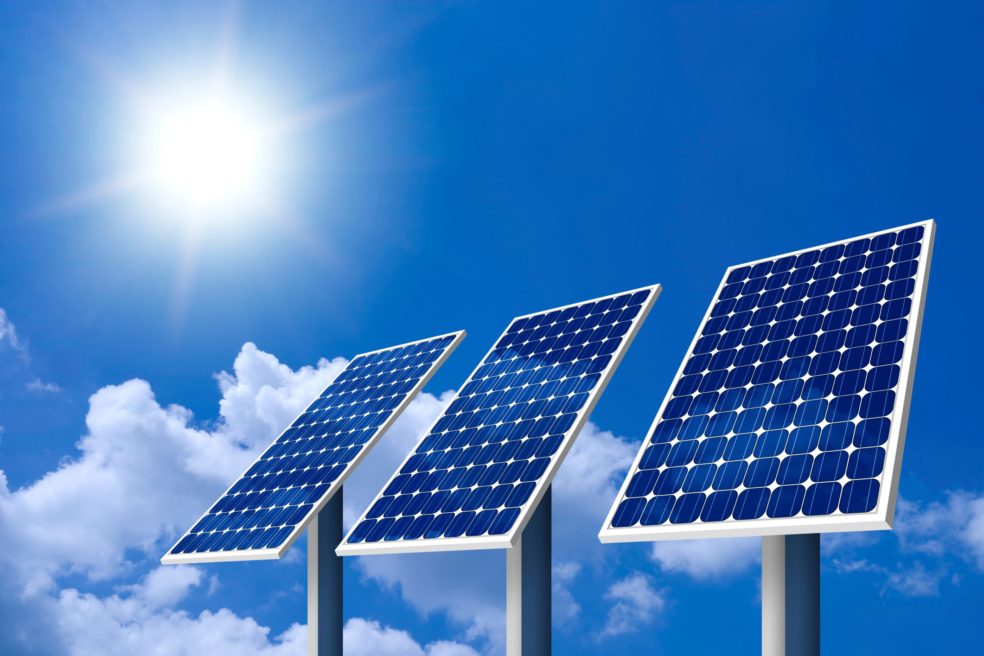In a material reported in the July 29th, 2016 edition of Science funded by the National Science Foundation, NSF and the United States Department of Energy is the breakthrough research that has solar cell capturing carbon dioxide and sunlight to produce burnable fuel. The sustained crash in crude oil prices coupled with the vandalism of fuel pipelines makes dependence on oil for any country an aberration. This ground-breaking technology further adds to the woes of crude oil dependent mono economies like Nigeria.
Researchers at the University of Illinois at Chicago, UIC have engineered a potentially game-changing solar cell that cheaply and efficiently converts atmospheric carbon dioxide directly into usable hydrocarbon fuel using sunlight for energy. Unlike conventional solar cells which convert sunlight into electricity that must be stored in heavy batteries, the new device essentially does the work of plants, converting atmospheric carbon dioxide into fuel thereby solving two crucial problems at once. A solar farm of such “artificial leaves” could remove significant amounts of carbon from the atmosphere and produce energy-dense fuel efficiently. “The new solar cell is not photovoltaic but photosynthetic” says Amin Salehi-Khojin, assistant professor of mechanical and industrial engineering at UIC.
“Instead of producing energy in an unsustainable one way route from fossil fuels to greenhouse gas, we can now reverse the process and recycle atmospheric carbon into fuel using sunlight,” he said. While plants produce fuel in the form of sugar, the artificial leaf delivers synthetic gas or syngas, a mixture of hydrogen gas and carbon monoxide. Syngas can be burned directly, converted into diesel or other hydrocarbon fuel.
The ability to turn CO2 into fuel at a cost comparable to a gallon of gasoline would render fossil fuel obsolete. Chemical reactions that convert CO2 into burnable forms of carbon are called reduction reactions, the opposite of oxidation or combustion. Engineers have been exploring different catalysis to drive CO2 reduction but so far, such reactions have been inefficient and rely on expensive precious metals such as silver, Salehi-Khojin said. Salehi-Khojin and his co-workers focused on a family of nano-structured compounds called transition metal dichalcogenides, TMDCs as catalysts, pairing them with an unconventional ionic liquid as the electrolyte inside a two-compartment, three electrode electrochemical cell.
The best of several catalysts they studied turned out to be nanoflake tungsten diselenide. The new catalyst is more active, more able to break carbon dioxide’s chemical bonds, said UIC post-doctoral researcher, Mohammed Asadi, first author on the Science paper. In fact, he said, the new catalyst is 1,000 times faster than noble-metal catalysts and about 20 times cheaper. Other researchers have used TMDC catalysts to produce hydrogen by other means but not by reduction of CO2. The catalyst couldn’t survive the reaction. “The active sites of the catalyst get poisoned and oxidised.” Salhi-Khojin said. The breakthrough, he said, was to use an ionic fluid called ethyl-methyl-imidazolium tetrafluoroborate, mixed 50-50 with water. “The combination of water and the ionic liquid makes a co-catalyst that preserves the catalyst’s active sites under the harsh reduction conditions,” Salhi-Khojin said.
The UIC artificial leaf consists of two silicon triple-junction photovoltaic of 18 square centimeters to harvest light, the tungsten diselenide and ionic liquid co-catalyst system on the cathode side and cobalt oxide in potassium phosphate electrolyte on the anode side. When light of 100 watts per square meter, about the average intensity reaching the Earth’s surface, energises the cell, hydrogen and carbon monoxide gas bubble up from the cathode while free oxygen and hydrogen ions are produces at the anode. “The hydrogen ions diffuse through a membrane to the cathode side to participate in the carbon dioxide reduction reaction,” said Asadi.
Source: www.guardian.ng

